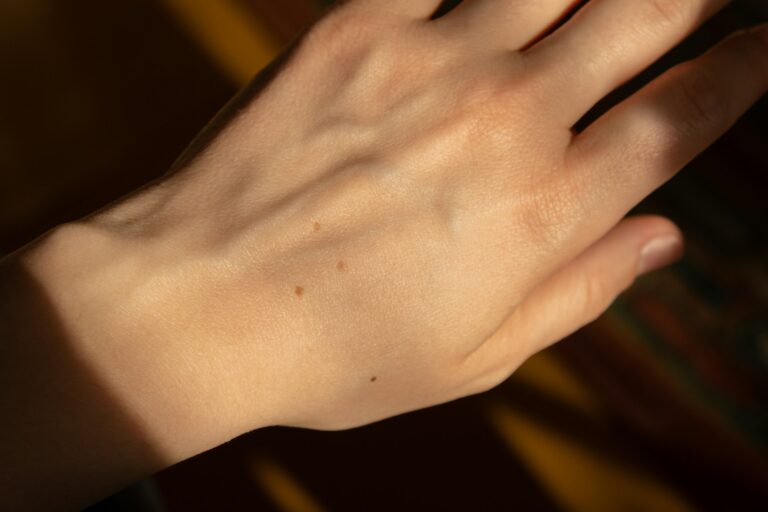The pictures we use in our articles might not show exactly what the words say. We choose these pictures to make you interested in reading more. The pictures work together with the words but don’t take their place. The words still tell you the important facts.
Hair is not just a mundane part of our bodies; it is a remarkable feature that serves both practical and aesthetic purposes. This versatile aspect of human biology varies widely in color, texture, and length, providing valuable insights into overall health and well-being. From its growth cycle to its composition, hair holds a treasure trove of mysteries waiting to be unraveled. In this comprehensive article, we will delve into 33 fascinating facts about hair, shedding light on its remarkable significance in the human body. Whether you are intrigued by the science behind hair growth or fascinated by its cultural significance, join us on a captivating journey through the world of hair as we explore its wonders and intricacies.
Unlocking the Secrets of Hair:
Hair is predominantly composed of a protein called keratin, imparting strength and resilience to this unique feature of human biology. This fibrous structural protein not only forms the basis of hair but also nails and the outer layer of the skin.
Unveiling the Marvels of Hair Growth:
Hair growth is a dynamic process that varies from person to person, influenced by factors such as age, genetics, and overall health. On average, hair grows about half an inch per month, making it the second fastest-growing tissue in the body after bone marrow.
The Multifaceted Nature of Hair Anatomy:
Each person possesses approximately 100,000 to 150,000 hair follicles on their scalp, each capable of producing multiple hairs throughout their lifetime. Understanding the three layers that compose hair, including the medulla, cortex, and cuticle, provides insights into its strength, flexibility, and condition.
Delving Deeper into the World of Hair:
- Hair Color Revelations:
- The amount and type of melanin produced by melanocyte cells in the hair follicle base determine hair color.
- Hair Health Clues:
- Changes in hair texture or growth patterns can sometimes indicate underlying health issues such as hormonal imbalances or nutritional deficiencies.
- Hair Resilience:
- A single hair strand can support up to 100 grams in weight, showcasing its strength.
- Hair pH Balance:
- The natural pH of hair, ranging from 4.5 to 5.5, helps maintain the health of the hair cuticle.
- Hair as DNA Source:
- Hair follicles contain DNA, making hair a valuable source for genetic testing and identification purposes.
Embracing the Diversity of Hair:
Hair comes in various forms, from straight and wavy to curly, influenced by genetic factors inherited from parents. It can also vary in thickness, length, and texture, creating a unique tapestry of individuality.
Nurturing Your Hair:
- Summertime Growth Spurt:
- Hair tends to grow faster during warm weather due to increased blood circulation in the scalp.
- Stress and Hair Health:
- High-stress levels can lead to hair loss or changes in hair texture, affecting the growth cycle.
- Nutritional Impact on Hair:
- A balanced diet rich in essential nutrients is crucial for maintaining healthy hair growth and condition.
The Cultural and Artistic Aspects of Hair:
Hair extends beyond its biological functions to play a significant role in cultural identity, artistic expression, and charitable endeavors. From creating wigs for cancer patients to using hair in art installations, its potential for creativity and compassion knows no bounds.
Celebrating the Wonder of Hair:
The complexities and marvels of hair transcend mere aesthetics, offering profound insights into genetics, health, and personal expression. By understanding the intricate details of hair composition, growth, and maintenance, individuals can make informed choices about their hair care routines and embrace the unique characteristics of their hair. Whether pondering the genetic determinants of hair traits or exploring the impact of external influences, the study of hair encompasses a diverse range of scientific, cultural, and artistic dimensions, reflecting the rich tapestry of human diversity and creativity.
Conclusion: Embrace the Splendor of Your Hair
In conclusion, the enigmatic world of hair beckons us to explore its many wonders and intricacies, providing a deeper appreciation for this integral aspect of human biology. From its composition and growth cycle to its cultural significance and artistic potential, hair offers a multifaceted journey of self-discovery and expression. By nurturing and celebrating the uniqueness of our hair, we honor its role in shaping personal identity and cultural diversity, enriching our lives with its rich tapestry of possibilities.
FAQs: Unveiling the Mysteries of Hair
- Main Components of Hair:
- Hair primarily consists of keratin, water, lipids, pigments, and trace elements, contributing to its strength, flexibility, and color.
- Hair Growth Dynamics:
- Hair growth follows a cycle of phases - anagen, catagen, and telogen - each playing a crucial role in the dynamics of hair growth and loss.
As you continue to explore the captivating world of hair, remember that every strand tells a story, reflecting the diverse and intricate tapestry of human identity and self-expression. Let your hair be a canvas for creativity, a symbol of resilience, and a source of inspiration as you embark on a journey of discovery and celebration of this remarkable aspect of human biology.
By delving into the fascinating realm of hair, we not only uncover its mysteries but also embrace its significance in our lives. Let the wonders of hair inspire you to nurture, celebrate, and cherish this remarkable feature that serves as a unique expression of who you are.


